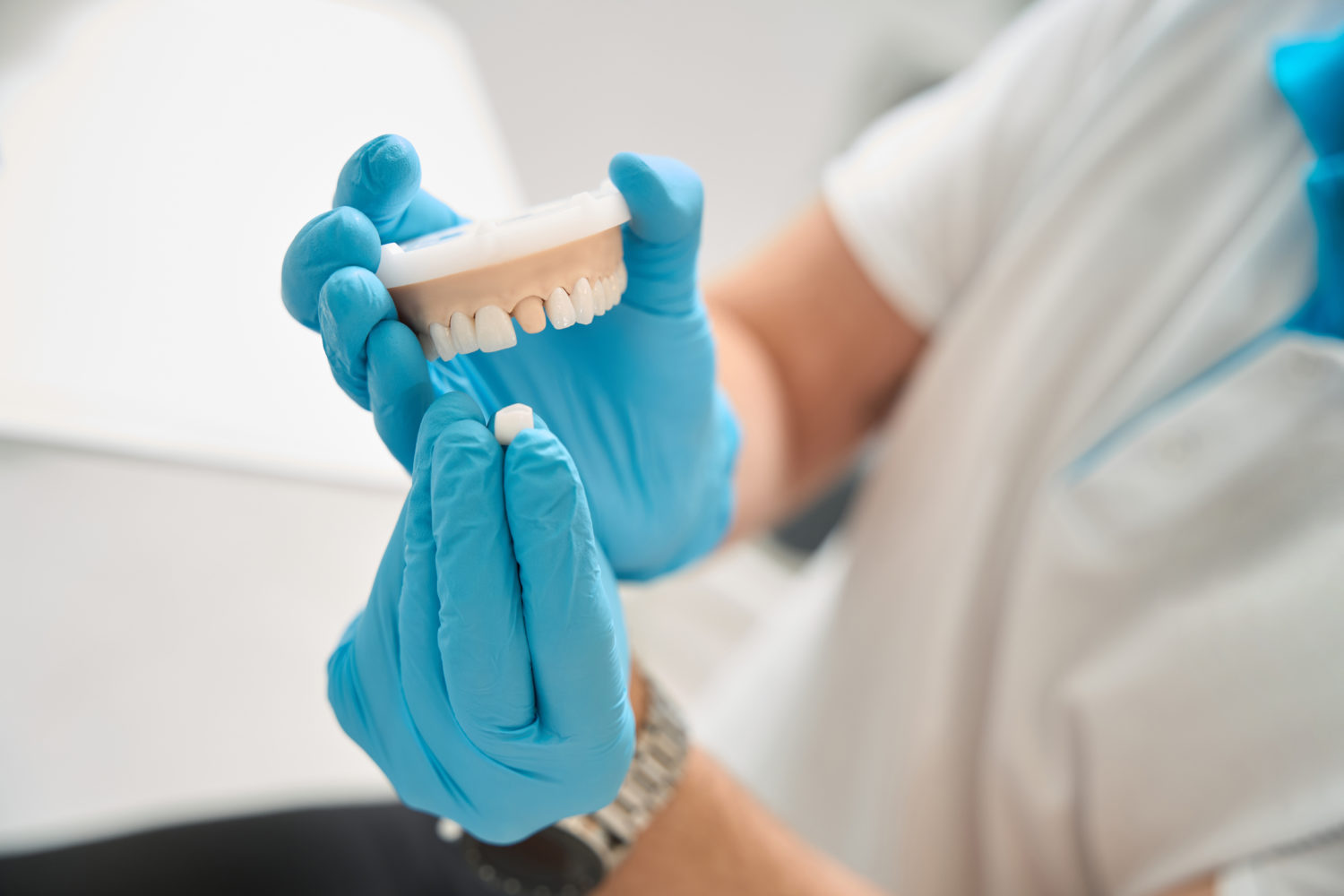
A dental crown is essentially a custom-made cap that fits over your existing tooth to protect, strengthen, and improve its appearance. Getting one for the first time can feel intimidating, but understanding the process can help ease your concerns. Whether you need a crown due to decay, damage, or after a root canal, here’s everything you should know about the procedure and what to expect.
The Initial Consultation
During your first appointment, a reputable clinic offering expert dental crown services will conduct a thorough examination of the affected tooth, gathering detailed X-rays to get a complete picture of your root structure and the surrounding bone. This imaging helps them spot any underlying issues that might affect your crown’s success.
They’ll then walk you through your options for crown materials, explaining the key differences between porcelain, ceramic, metal alloys, or combinations of these materials. While porcelain and ceramic crowns are popular for their incredibly natural look – they’re practically indistinguishable from real teeth – they may not hold up as well as metal alloys against strong biting forces. Your dentist will help you weigh these trade-offs, considering practical factors like which tooth needs the crown, how visible it is when you smile, your daily habits, and your budget constraints.
The dentist will also discuss any insurance coverage and payment options available to you.
The Crown Preparation Process
The real work begins at your first major appointment, where your tooth will be prepared for its new crown. Your dentist will start by thoroughly numbing the area – you’ll feel a pinch from the anesthetic injection, but after that, you won’t feel any pain. Using specialized dental tools, they’ll carefully reshape your tooth, removing precise amounts of enamel and any decay to create the perfect foundation for your crown.
Sometimes, teeth are too damaged or decayed to support a crown on their own. In these cases, your dentist will build up the tooth structure using strong filling materials, creating a solid core that will securely hold your new crown.
Once your tooth is perfectly shaped, it’s time for impressions. Your dentist will use either traditional putty-like materials or modern digital scanning technology to capture an exact model of your prepared tooth and surrounding teeth. These impressions are crucial – they’re like a detailed 3D map that helps create a crown that fits perfectly and functions naturally when you bite and chew.
If you’re getting a tooth-colored crown, your dentist will spend time carefully matching the shade to your natural teeth, often using special lighting and shade guides to ensure the color looks natural in different lighting conditions.
The Temporary Crown Phase
While skilled dental technicians craft your permanent crown in a specialized laboratory (a process that typically takes two to three weeks), you’ll be fitted with a temporary crown. Usually made from dental acrylic, this protects your prepared tooth and maintains your ability to eat and speak normally. However, it’s important to treat this temporary crown with care – think of it as a placeholder rather than a permanent solution.
You’ll need to modify your eating habits slightly, like staying away from chewy foods like caramel or gum, avoiding crunching on hard items like ice or nuts, and trying to chew mostly on the other side of your mouth. When flossing, slide the floss out sideways rather than lifting it up, as pulling upward could dislodge the temporary crown. Your dentist will give you specific care instructions to ensure your temporary crown stays in place until your permanent one is ready.
Permanent Crown Placement
When your permanent crown arrives from the laboratory, you’ll return for what’s usually a shorter appointment. Your dentist will first remove the temporary crown and clean off any remaining temporary cement. Then comes the exciting part – trying out your new permanent crown. Your dentist will check multiple factors: how well it fits over your prepared tooth, whether the color blends seamlessly with your surrounding teeth, and most importantly, how it fits into your bite pattern.
Sometimes, minor adjustments are needed – your dentist can carefully polish and reshape small areas until everything feels just right. Only when you and your dentist are completely satisfied with the fit, appearance, and comfort will they permanently cement the crown in place. The cement will be hardened with a special light, and any excess will be carefully cleaned away.
Post-Crown Care and Adjustment
In the days following your permanent crown placement, you might experience some mild sensitivity, particularly to hot and cold temperatures. If you’ve had a root canal on the same tooth, you might notice some tenderness in the surrounding gum tissue. This is all part of the normal adjustment process – think of it like breaking in a new pair of shoes. Over-the-counter pain relievers like ibuprofen can help manage any discomfort.
Your tongue might also be very aware of your new crown at first, constantly exploring this foreign object in your mouth. Don’t worry – within a week or so, your brain will adjust to the new sensation, and you’ll likely forget the crown isn’t your natural tooth.

Long-Term Maintenance
With proper care, your dental crown can serve you well for 10-15 years or even longer. The key to maximizing its lifespan is maintaining excellent oral hygiene. While the crown itself can’t decay, the natural tooth structure underneath remains vulnerable to cavities, especially at the crown’s margins where it meets your gum line.
Brush thoroughly twice daily using fluoride toothpaste, paying extra attention to the crown’s edges. When flossing, be thorough but not aggressive – slide the floss gently between teeth rather than snapping it down, which could irritate your gums. Regular dental check-ups become even more important now. Your dentist will check for signs of wear, ensure the margins remain sealed, and verify that your bite alignment stays correct.
When To Contact Your Dentist
After getting your crown, trust your instincts – if something doesn’t feel right, it’s better to have it checked out early. Contact your dentist if you experience sharp or throbbing pain that persists beyond a few days, unusual sensitivity that doesn’t improve, or if your bite feels uneven when you’re chewing.
If your crown feels loose or rocks slightly, or in the rare case that it comes off completely, call your dentist immediately. These situations need prompt attention to prevent damage to the underlying tooth or neighboring teeth. Keep your crown if it comes off and bring it to your appointment – in many cases, it can be recemented if it’s still in good condition.
Conclusion
Getting a dental crown might seem daunting at first, but it’s a routine and well-established procedure that can significantly improve both the function and appearance of your tooth. By understanding what to expect at each stage, you can approach the process with confidence. Remember that millions of people have dental crowns, and modern techniques and materials have made the procedure more comfortable and successful than ever before.







